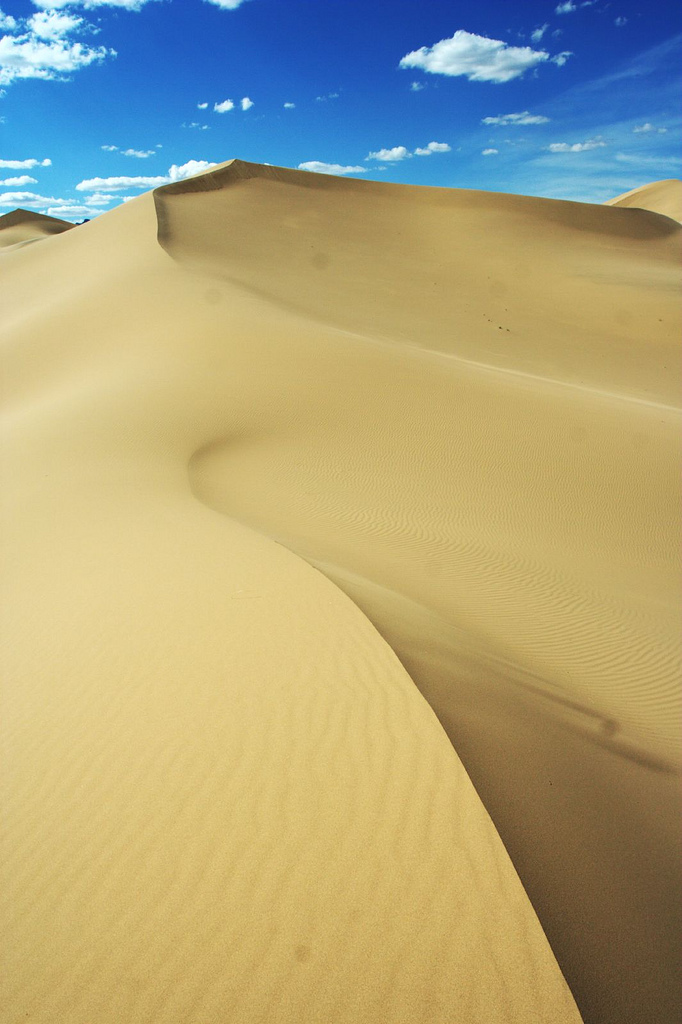Gobi Gurvansaikhan National Park on:
[Wikipedia]
[Google]
[Amazon]
Gobi Gurvansaikhan National Park (, ''Gobi three beauties nature complex'') is a national park in southern
Border map at ProtectedPlanet.net

Mongolia
Mongolia; Mongolian script: , , ; lit. "Mongol Nation" or "State of Mongolia" () is a landlocked country in East Asia, bordered by Russia to the north and China to the south. It covers an area of , with a population of just 3.3 million, ...
. The park was established in 1993, and expanded to its current size in 2000. The park, at nearly 27,000 square kilometers, is the largest national park in Mongolia, stretching 380 km from east to west and 80 km from north to south.
The park is named for the Gurvan Saikhan Mountains, which translates to the ''Three Beauties''. The name is derived from three subranges, the East, Middle and West Beauty. The range forms the eastern half of the park.
The park lies on the northern edge of the Gobi desert. The higher elevations contain areas of steppe, and reach elevations of up to 2,600 meters. A number of rare plants and animals are found in the park, including the elusive snow leopard
The snow leopard (''Panthera uncia''), also known as the ounce, is a felid in the genus '' Panthera'' native to the mountain ranges of Central and South Asia. It is listed as Vulnerable on the IUCN Red List because the global population is es ...
and the Gobi camel. Areas of sand dunes are found, most famously the Khongoryn Els - the Singing Sands. Another major tourist destination is Yolyn Am, which is connected with Dalanzadgad by paved road and a mountain valley that contains a large ice field through most of the year.
The park is usually accessed via the town of Dalanzadgad
Dalanzadgad ( mn, Даланзадгад; ) is the capital of Ömnögovi Aimag in Mongolia. It is located south of the national capital Ulaanbaatar. The altitude of the city center is 1,470 meters (4,823 feet).
As of 2011, its population is 19,3 ...
, which has airport service to Ulaanbaatar
Ulaanbaatar (; mn, Улаанбаатар, , "Red Hero"), previously anglicized as Ulan Bator, is the capital and most populous city of Mongolia. It is the coldest capital city in the world, on average. The municipality is located in north ce ...
.
Wildlife
The park is a haven for some endangered species like theargali
The argali (''Ovis ammon''), also known as the mountain sheep, is a wild sheep that roams the highlands of western East Asia, the Himalayas, Tibet, and the Altai Mountains.
Description
The name 'argali' is the Mongolian word for wild sheep. It ...
sheep, snow leopard and Siberian ibex
The Siberian ibex (''Capra sibirica''), also known as the Altai ibex, Central Asia(n) ibex, Gobi ibex, Himalayan ibex, Mongolian ibex or Tian Shan ibex, is a species of ibex that lives in central Asia. It has traditionally been treated as a subs ...
. The eponymous mountains of the park are inhabited by the magnificent lammergeier, or bearded vulture
The bearded vulture (''Gypaetus barbatus''), also known as the lammergeier and ossifrage, is a very large bird of prey and the only member of the genus ''Gypaetus''. Traditionally considered an Old World vulture, it actually forms a separate mi ...
. The eastern range of the park supports the endangered Saker Falcon
The saker falcon (''Falco cherrug'') is a large species of falcon. This species breeds from central Europe eastwards across the Palearctic to Manchuria. It is mainly migratory except in the southernmost parts of its range, wintering in Ethiopia ...
.
See also
*List of national parks of Mongolia
References
External linksInformation About Mongolian National Parks, Strictly reserved areas and nature reserves
External links
Border map at ProtectedPlanet.net

References
National parks of Mongolia Gobi Desert Protected areas established in 1993 {{-